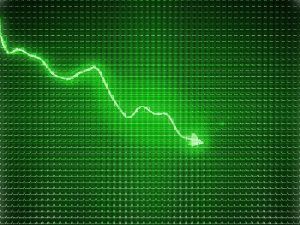Where Are We In the Business Cycle?
Posted onEconomists like to define business cycles through four stages: expansion, peak, contraction and trough.

What does this mean exactly? During an expansion phase of the economy – gross domestic product (GDP) is growing and expanding. Businesses are expanding, hiring new people, investing in their businesses and, typically, the stock market is climbing. By that definition – it’s easy to say we are in the expansion phase right now.
But have we peaked already?
Rising prices – or inflation – is a sign of the peak stage. Overconfident stock market investors is another characteristic of the peak stage. Sound familiar?
We did have a severe bear market in stocks after COVID hit last year – yet notably – it was the shortest bear market in history. (Bear markets are typically defined as a stock market pullback of 20% or more.)
Looking back, the S&P 500 hit an all-time high in February, 2020 – then plunged a shocking 34% the next month. The swift turnaround in stocks was unprecedented – by August 2020, the S&P 500 had fully recovered.
Was that bear market in stocks normal? Not even close. The average length of a bear market is 349 days with an average decline of 36%, according to Invesco.
Compare that to the 2008 Financial Crisis. The S&P 500 plunged a nasty 52% — and the bear market lasted 1.3 years.
As consumer prices on nearly everything rise now, and stocks climb – this typically signals a feverish type of peak to the expansion phase. Many believe we have already peaked. In fact, some economic data is already revealing a slowdown.
What comes next in the business cycle? The contraction phase.
Economists measure the contraction from the peak to the trough. The contraction phase officially becomes a “recession” once two consecutive quarters of negative GDP growth occur.
When was our last recession? Yep, it was last year – from February 2020 to April 2020 – lasting an unprecedented two months.
Not only did we see the shortest bear market in history last year, we saw the shortest recession in U.S. history, as measured by the National Bureau of Economic Research.
What does that suggest? Some believe that those events were so short that they hardly count. The 2020 recession wasn’t long enough to equalize the pressures of a normal business cycle.
What could that mean going forward? The next recession could be longer. Much longer.
What can trigger economic contractions and stock bear markets you might ask? Rising interest rates are a big factor. Rising interest rates tamp down consumer activity and business investment and spending. Rising interest rates also negatively affect earnings and stock prices. The idea is that higher borrowing costs means companies are paying more to service their debt, which weighs on profits.
One of the many reasons that people like you may invest in gold or are thinking about investing in tangible assets is as a portfolio hedge. Gold and rare coins are a hedge for many economic variables including a bear market in stocks.
Historically, gold becomes inversely correlated to the stock market during times of equity market stress. That means when stock prices go down sharply, historically gold prices have climbed significantly.
While many stock market investors are overconfident right now, it can be useful to step back and view the big picture. Consider where we are in the business cycle now – and consider if you are properly diversified for what comes next. If you have questions, we can help.
Want to read more? Subscribe to the Blanchard Newsletter and get our tales from the vault, our favorite stories from around the world and the latest tangible assets news delivered to your inbox weekly.







